Traditional façade hides a spacious, minimalist interior in Sydney
Australian architect Lachlan Seegers creates Erskineville House, a minimalist home behind a conventional façade
Rory Gardiner - Photography
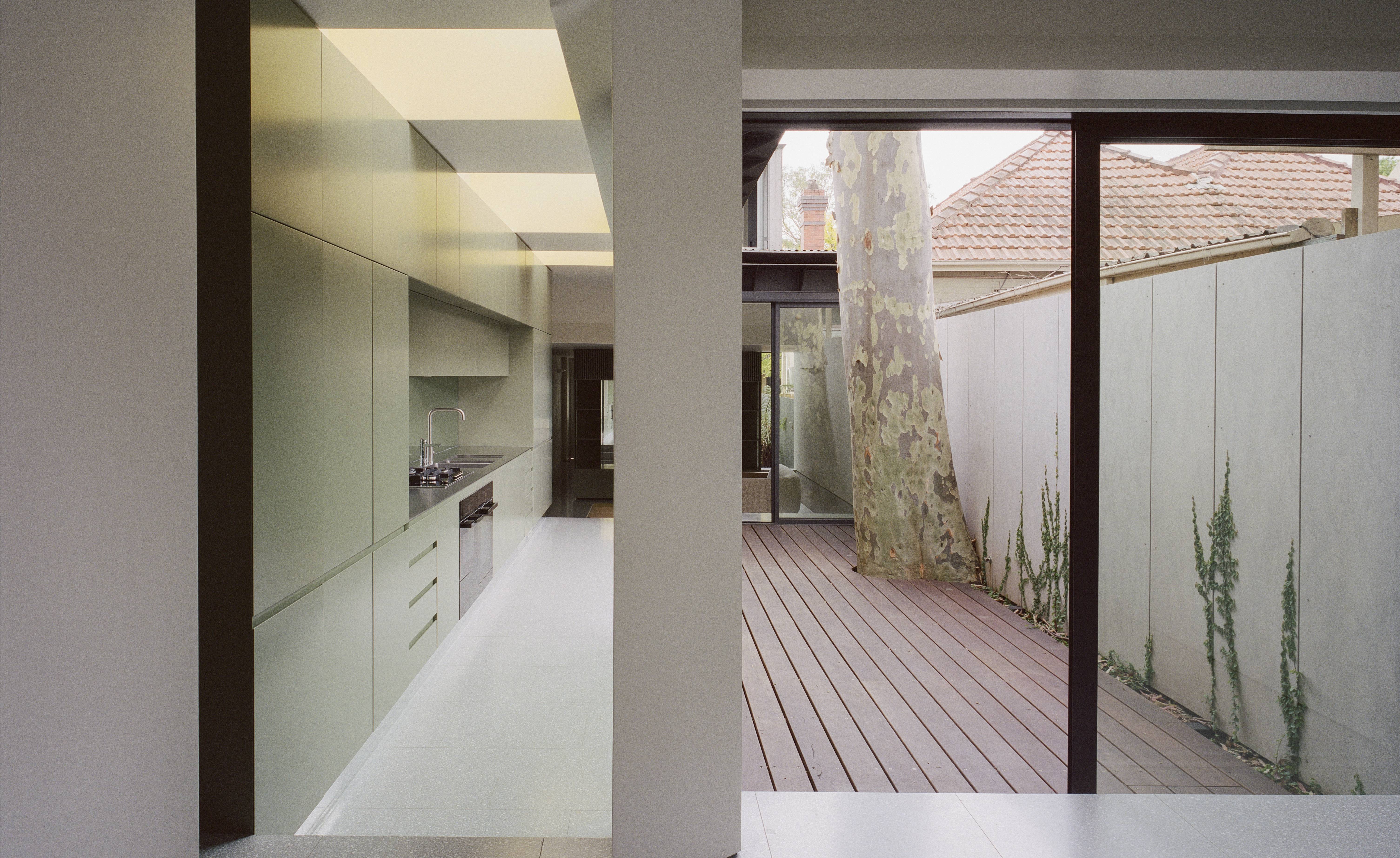
Architect Lachlan Seegers designed the Erskineville House around an unusual focal point – a native spotted gum tree that now takes pride of place in the courtyard at the heart of this suburban dwelling, in the Sydney suburb of Erskineville. The site is narrow (just 4.8m wide) but long (nearly 36m), and the house with its minimalist interior is designed behind a fairly traditional façade.
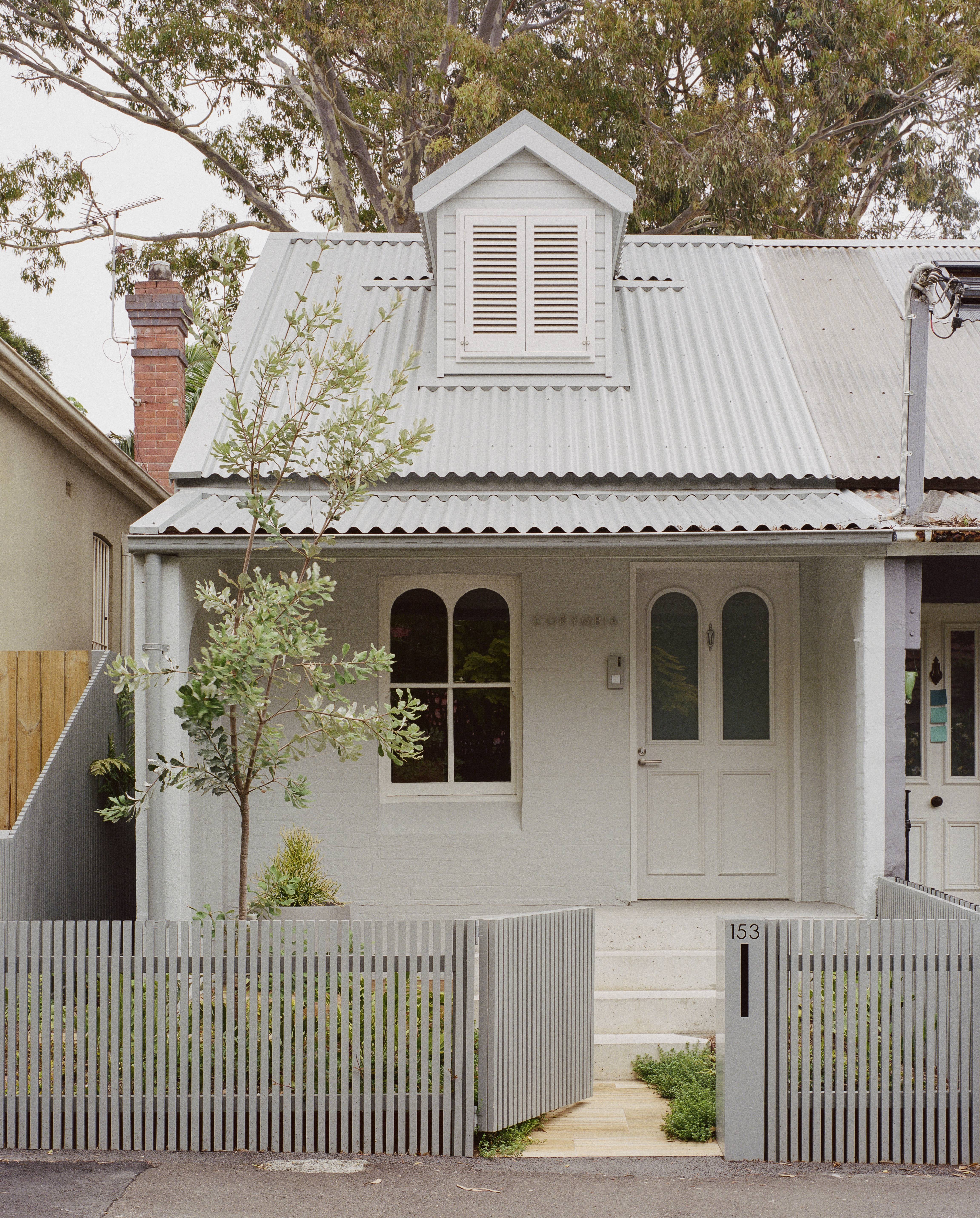
At ground-floor level, the house presents a conventional period frontage, complete with arched windows, a covered porch and a corrugated metal roof.
Inside, however, the linear plan has been conceived to incorporate pockets of function amidst long vistas and spaces, with a special emphasis on verticality in what is still a two-storey property.

The house is effectively cut into two sections by the new courtyard, above which towers the 20m spotted gum tree. The tree’s origins date back to the 1970s, when Sydney’s town council gave native saplings to anyone who wanted one as part of a programme to reinstate the city’s lost vegetation.
Hardy and striking, the tree creates an ever-changing centrepiece, with its distinctive mottled bark and dense canopy.
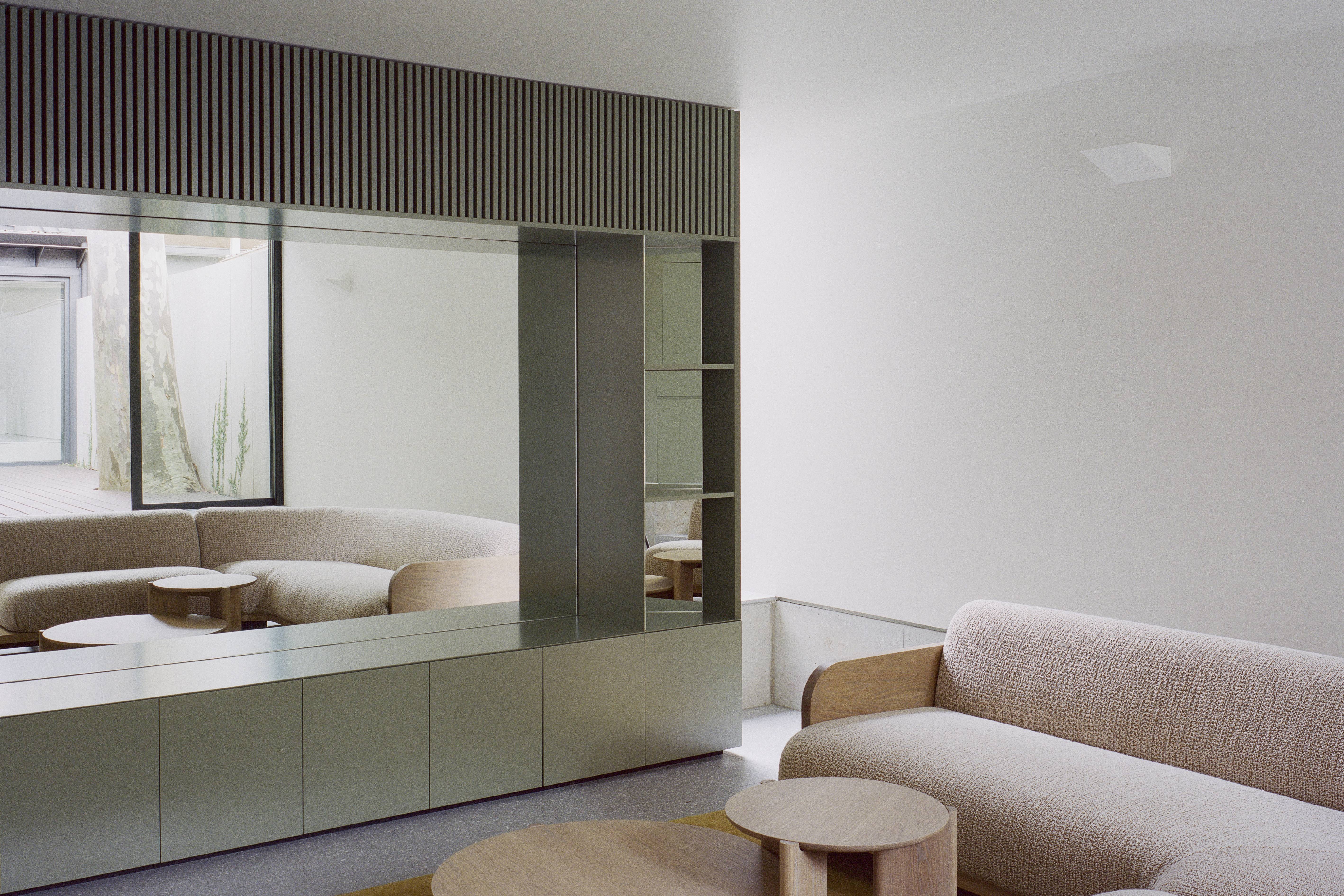
From the entrance lobby, one passes a ground-floor bedroom, then into the main space, a sequence of a sunken living room, a kitchen, and a dining room wrapped around the glazed courtyard, with the cooking area occupying a galley-style space alongside the edge.
A utility space, bathroom, and garage occupy the far end of the plan.
Receive our daily digest of inspiration, escapism and design stories from around the world direct to your inbox.

Two separate staircases, one at each end of the property, lead up to two independent, self-contained bedroom suites, each with its own terrace and views into the branches of the tree.
A raised roof above the galley kitchen is punctuated by three large rooflights with yellow-painted walls, enhancing the sense of space and bringing more views of the tree. The bathrooms also have lightwells, lined with dark blue tiles to create an underwater ambiance.
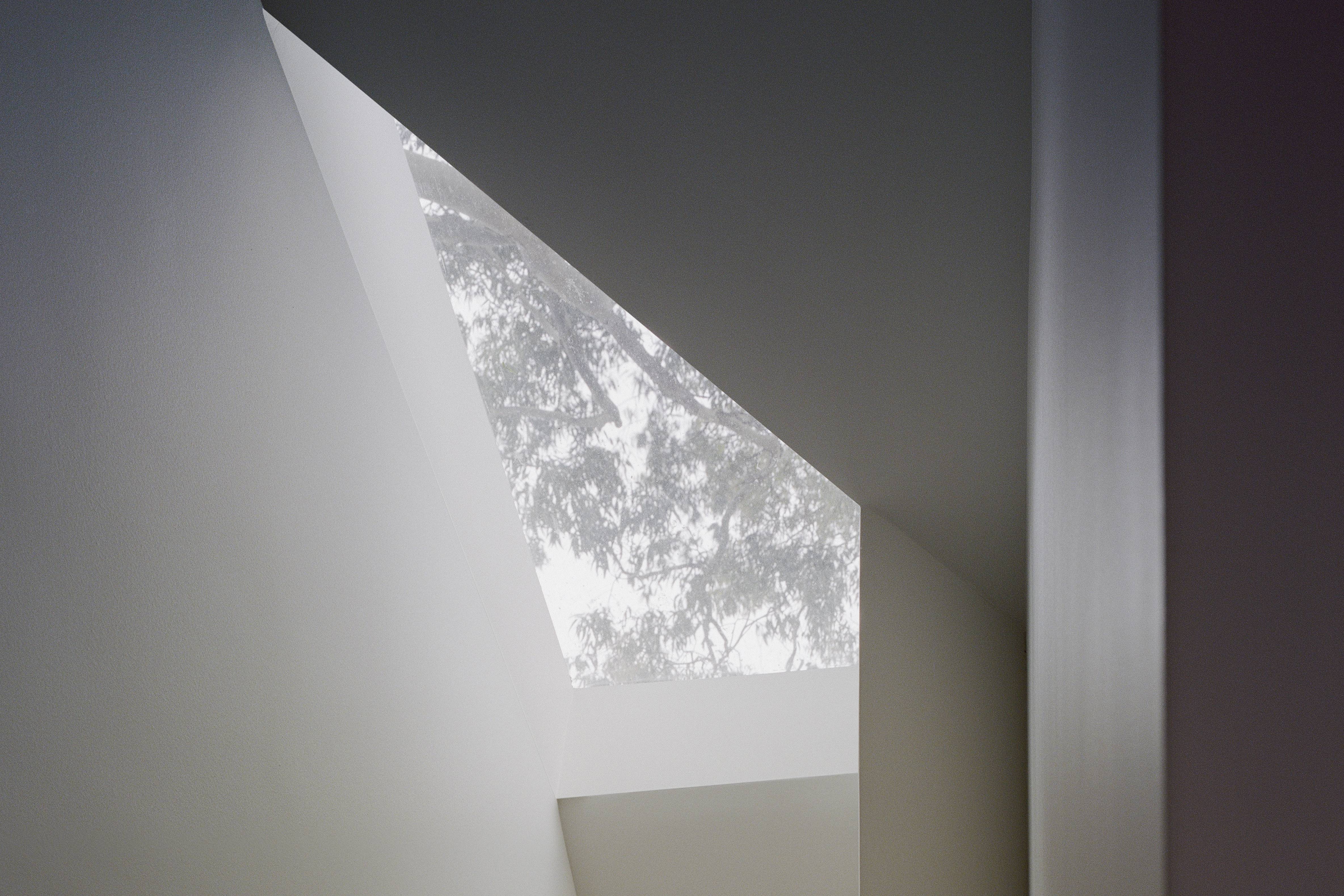
The gum tree isn’t just a constant presence; the colour of its bark informed the tint used on the joinery, and spotted gum was used for the stairs.
Lachlan Seegers speaks of ‘fine-tuning’ every view and aperture, creating a living space that is alive with subtle colour, rippling light, and warm materiality. The house was shortlisted for a 2022 Australian Interior Design Award.
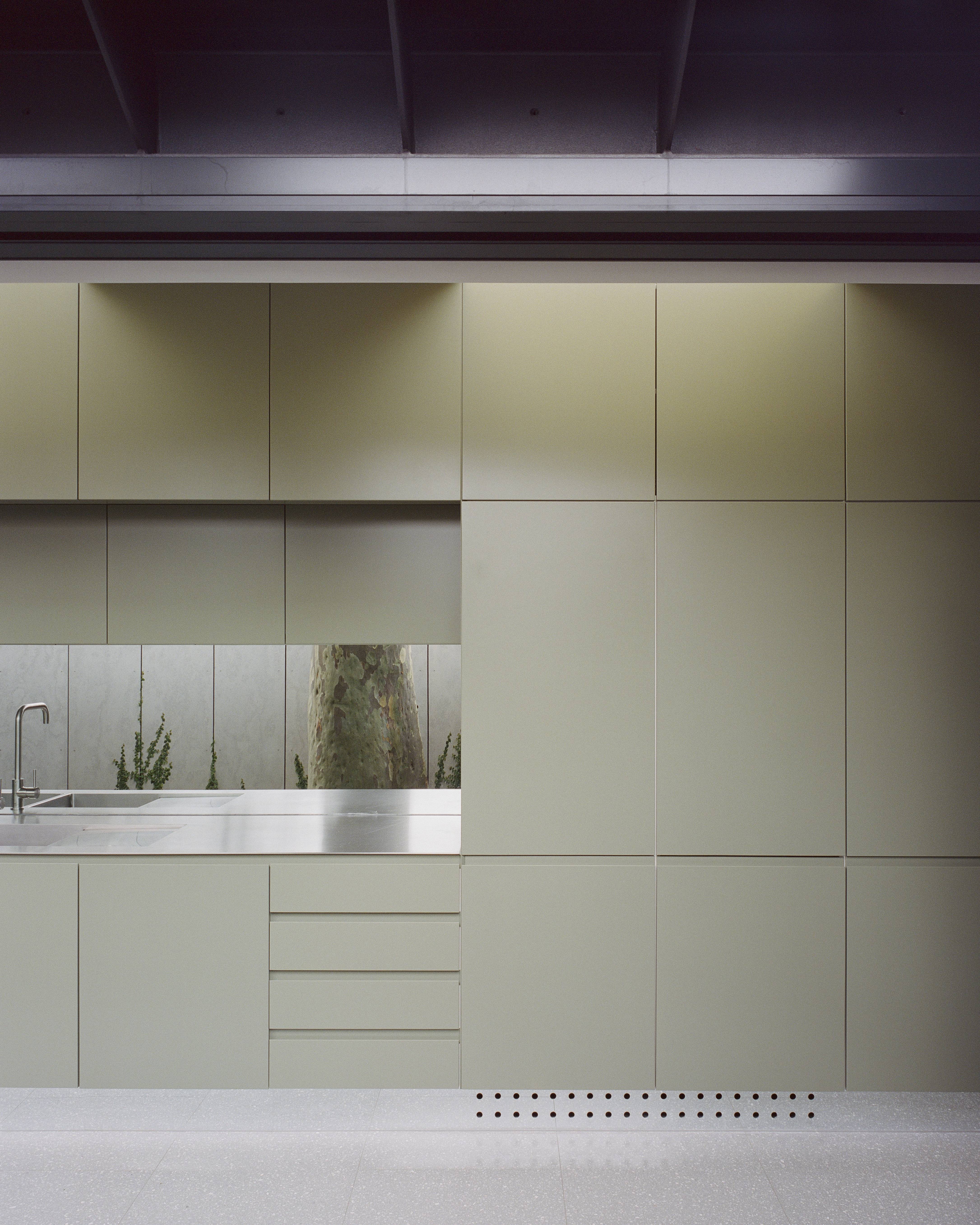


INFORMATION
Jonathan Bell has written for Wallpaper* magazine since 1999, covering everything from architecture and transport design to books, tech and graphic design. He is now the magazine’s Transport and Technology Editor. Jonathan has written and edited 15 books, including Concept Car Design, 21st Century House, and The New Modern House. He is also the host of Wallpaper’s first podcast.
-
 The Bombardier Global 8000 flies faster and higher to make the most of your time in the air
The Bombardier Global 8000 flies faster and higher to make the most of your time in the airA wellness machine with wings: Bombardier’s new Global 8000 isn’t quite a spa in the sky, but the Canadian manufacturer reckons its flagship business jet will give your health a boost
-
 A former fisherman’s cottage in Brittany is transformed by a new timber extension
A former fisherman’s cottage in Brittany is transformed by a new timber extensionParis-based architects A-platz have woven new elements into the stone fabric of this traditional Breton cottage
-
 New York's members-only boom shows no sign of stopping – and it's about to get even more niche
New York's members-only boom shows no sign of stopping – and it's about to get even more nicheFrom bathing clubs to listening bars, gatekeeping is back in a big way. Here's what's driving the wave of exclusivity
-
 The Architecture Edit: Wallpaper’s houses of the month
The Architecture Edit: Wallpaper’s houses of the monthFrom wineries-turned-music studios to fire-resistant holiday homes, these are the properties that have most impressed the Wallpaper* editors this month
-
 An Australian holiday home is designed as a bushfire-proof sanctuary
An Australian holiday home is designed as a bushfire-proof sanctuary‘Amongst the Eucalypts’ by Jason Gibney Design Workshop (JGDW) rethinks life – and architecture – in fire-prone landscapes, creating a minimalist holiday home that’s meant to last
-
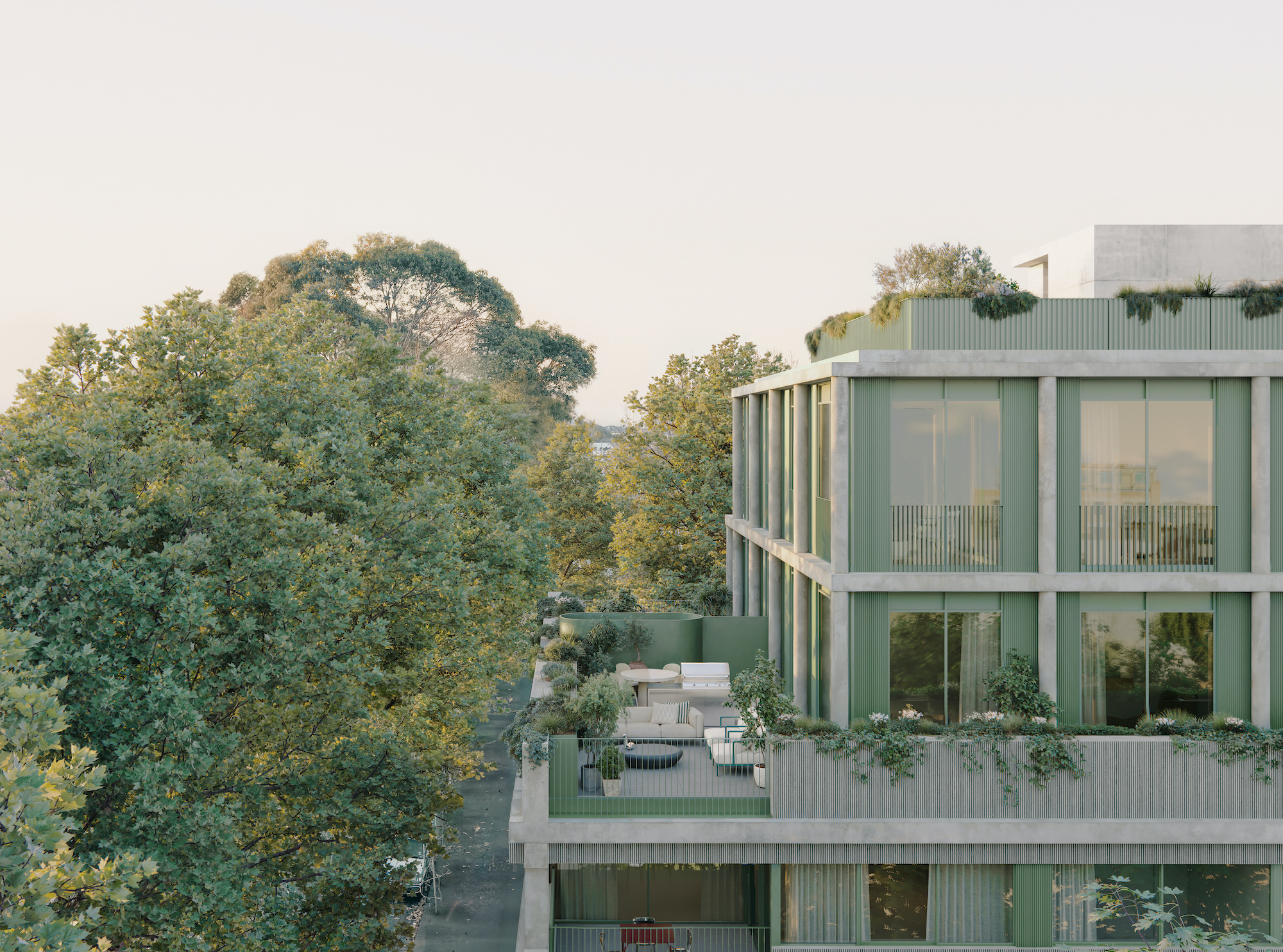 Neometro is the Australian developer creating homes its founders ‘would be happy living in’
Neometro is the Australian developer creating homes its founders ‘would be happy living in’The company has spent 40 years challenging industry norms, building design-focused apartment buildings and townhouses; a new book shares its stories and lessons learned
-
 The Melbourne studio rewilding cities through digital-driven landscape design
The Melbourne studio rewilding cities through digital-driven landscape design‘There's a lack of control that we welcome as designers,’ say Melbourne-based landscape architects Emergent Studios
-
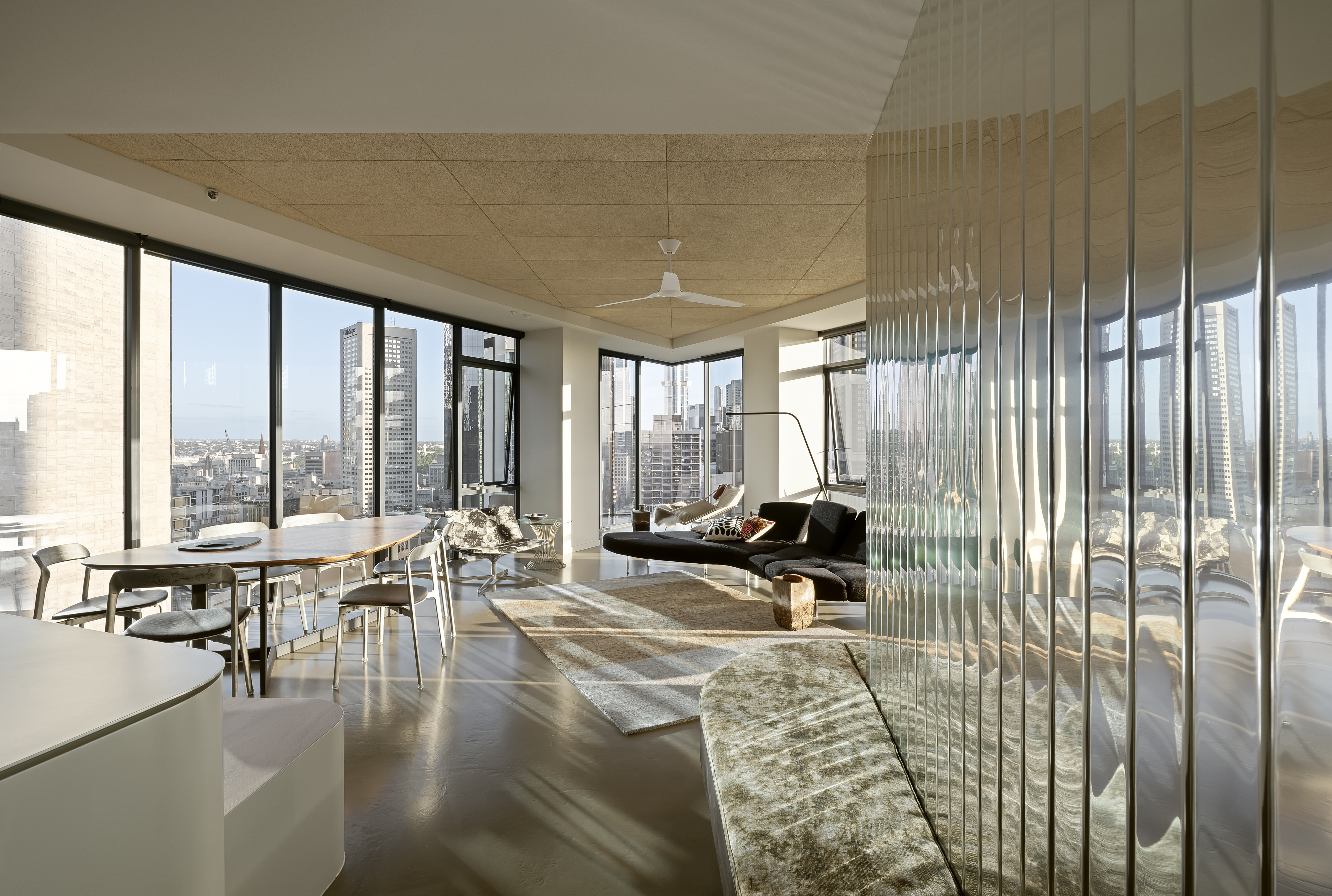 A Republic Tower apartment refresh breathes new life to a Melbourne classic
A Republic Tower apartment refresh breathes new life to a Melbourne classicLocal studio Multiplicity's refresh signals a new turn for an iconic Melbourne landmark
-
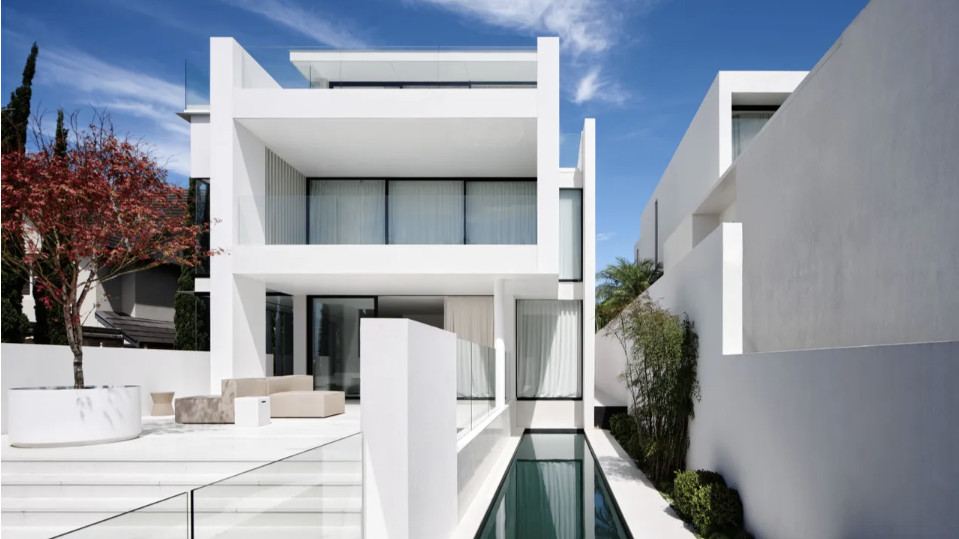 A Japanese maple adds quaint charm to a crisp, white house in Sydney
A Japanese maple adds quaint charm to a crisp, white house in SydneyBellevue Hill, a white house by Mathieson Architects, is a calm retreat layered with minimalism and sophistication
-
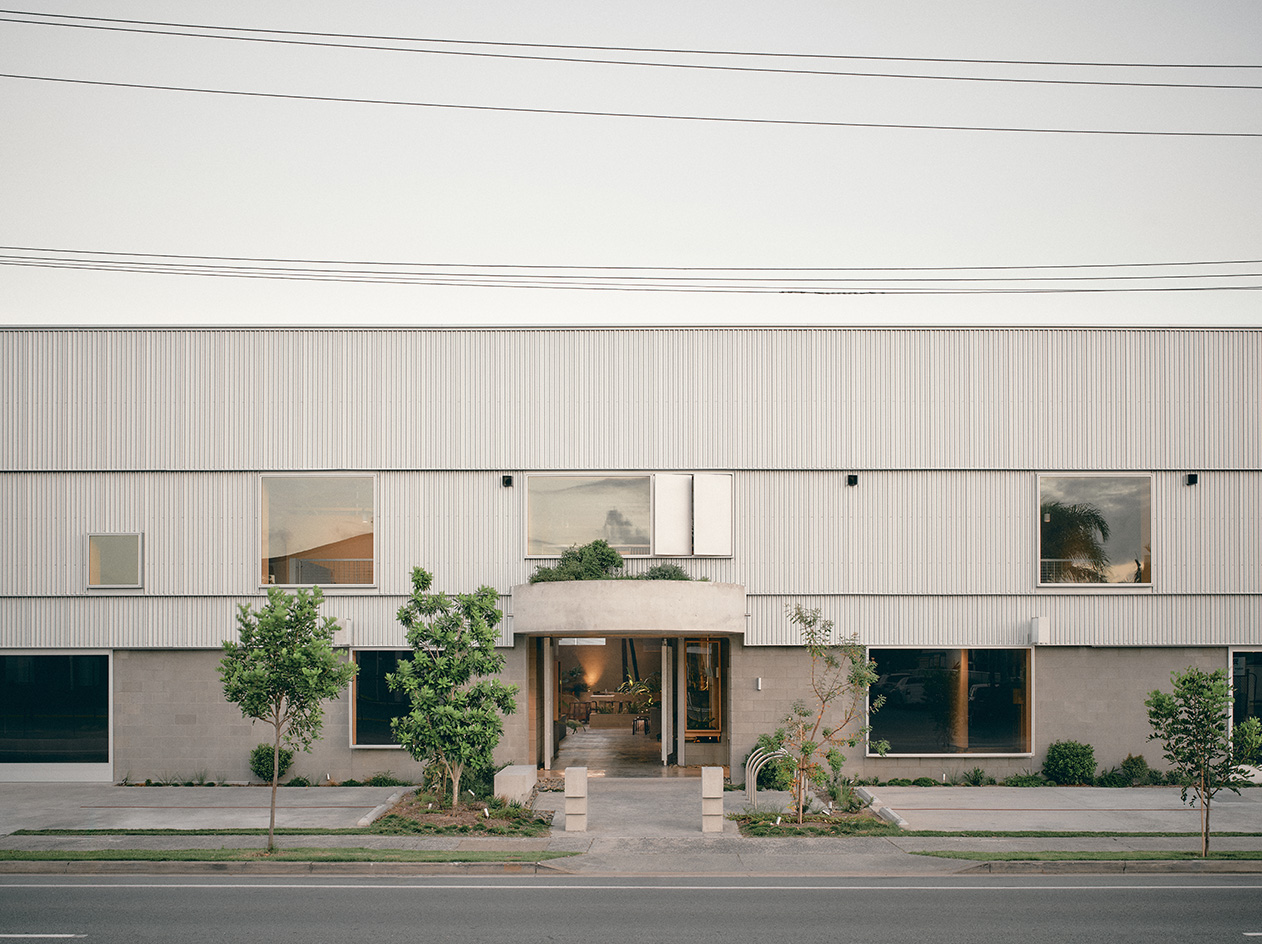 A redesigned warehouse complex taps into nostalgia in Queensland
A redesigned warehouse complex taps into nostalgia in QueenslandA warehouse in Queensland has been transformed from neglected industrial sheds to a vibrant community hub by architect Jared Webb, drawing on the typology's nostalgic feel
-
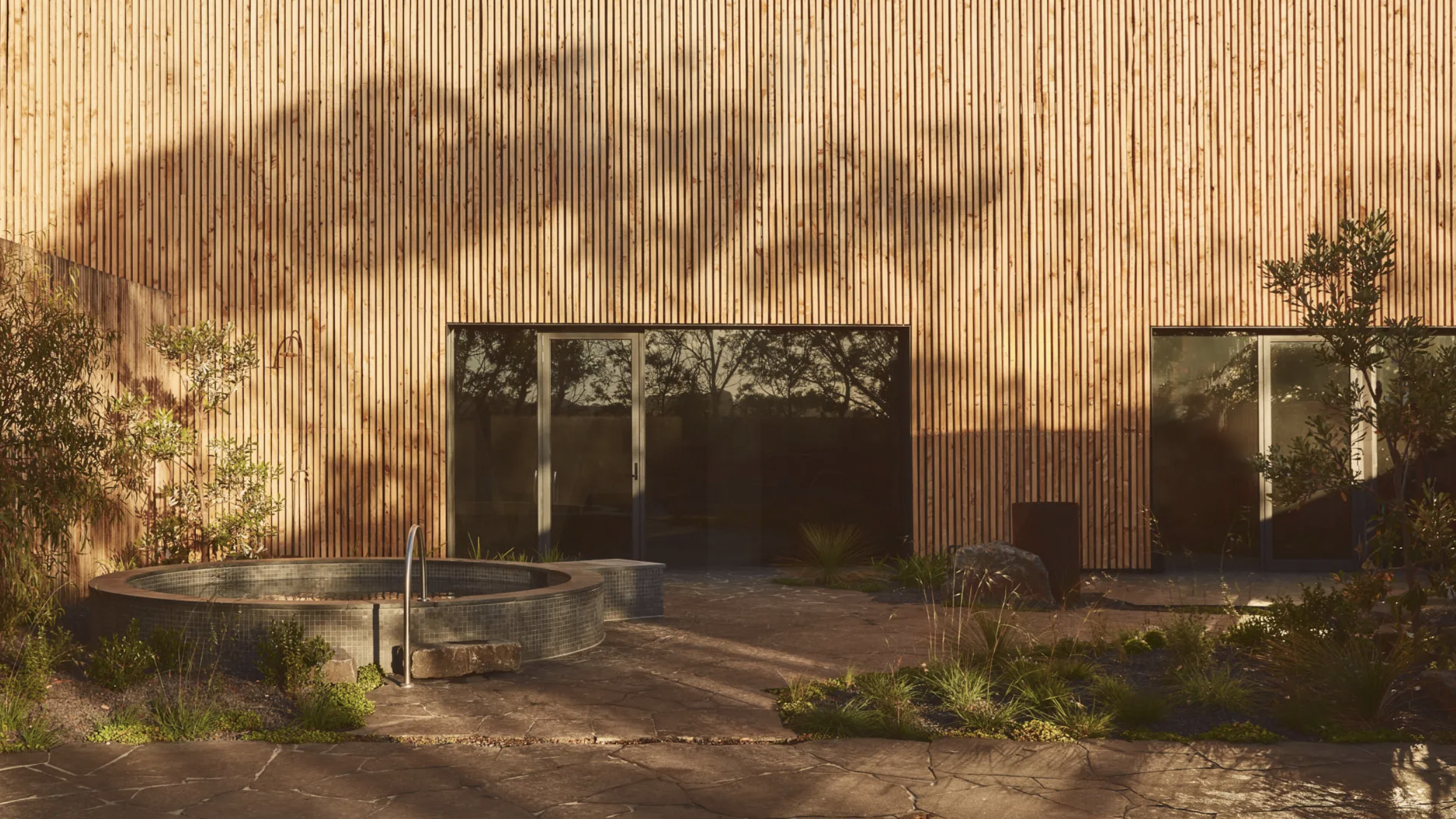 Australian bathhouse ‘About Time’ bridges softness and brutalism
Australian bathhouse ‘About Time’ bridges softness and brutalism‘About Time’, an Australian bathhouse designed by Goss Studio, balances brutalist architecture and the softness of natural patina in a Japanese-inspired wellness hub